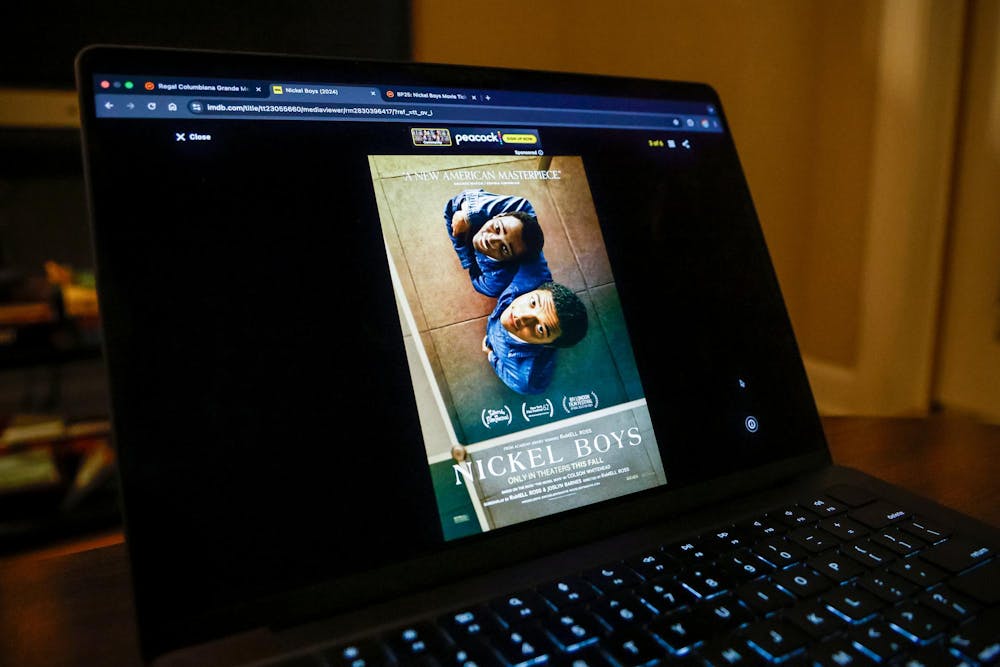Movie: Nickel Boys
Release Date: Dec. 13, 2024
Director: RaMell Ross
Runtime: 2 hours, 20 minutes
Genre: Drama
Oscar Nominations: Best Picture and Adapted Screenplay
Rating: A

Most Hollywood directors would jump at the opportunity to water down a novel like Colson Whitehead’s Pulitzer Prize-winner “The Nickel Boys” in order to appeal to a broad range of Academy voters. RaMell Ross, however, chose to audaciously push the boundaries of what cinema can accomplish, telling Whitehead’s painful story of African-American trauma entirely from a first-person point of view.
“Nickel Boys” follows a young Elwood Curtis (Ethan Herisse) who is sentenced to an abusive reform school called Nickel Academy after being wrongfully accused of stealing a car. Soon after arriving, Elwood befriends Turner (Brandon Wilson), a boy who has been in Nickel before and experienced the torture that African American boys like themselves are put through. By depicting their friendship as they navigate through these horrors, “Nickel Boys” becomes a beautiful tapestry about identity and fighting for change.
When Elwood meets Turner, it becomes clear that the choice to shoot this film entirely in first-person is not just a gimmick. Until this point, the audience only sees Elwood’s face through reflections in store windows and his grandmother’s clothes iron. The audience's inability to see Elwood as a person until this point also represents how Elwood has not yet found his identity. During a conversation at lunch, the film switches from Elwood’s point of view to Turner’s. Switching perspectives shows how Turner helps Elwood see himself and vice versa.
At one point in the film, Turner tells Elwood, “You got to watch how people act, what they do, and then you try to figure how to get around them like an obstacle course.” Later on, Elwood says, “It's not an obstacle course, Turner. You can't go around it, you have to go through it. Walk with your head up no matter what they throw at you.” This divide in ideology is the driving point of the film.
Elwood and Turner’s friendship also raises thought-provoking questions about how to navigate the terrors of Nickel Academy and whether they should take a stand for what is right due to their differing perspectives. Switching between points of view forces the audience to not only consider but physically see both perspectives.
Early in the film, Elwood listens to a Martin Luther King Jr. speech on television and then looks down at his arm and the color of his skin. At this moment, he realizes he must fight for change like Dr. King.
While at Nickel, Elwood uses his drive to fight for what is right to search for every way to get out and find help for other oppressed boys at Nickel.
On the other hand, Turner takes a far more defeated approach towards Nickel, accepting his fate of never being able to leave. Turner knows what happens to the students who disobey those in power: They are taken to a shed and whipped. Turner is too afraid to risk this pain in order to escape and force the change that is needed.
Choosing to film in first-person allows the boys to act as a mirror for each other and grow as individuals, especially Turner. Because of his friendship with Elwood, Turner is eventually able to take on the same motivated attitude.
Elwood and Turner’s struggle inside Nickel Academy can be looked at as a reflection of America’s systemic racism and oppression during this time. The boys figuring out how to fight this heinous institution represents the Civil Rights era struggle for equality on a broader level.
It is appropriate, then, that after all the pain and heartbreak the audience has experienced, the final shot shows an outstretched hand ready to pull them off the ground so they can make a difference, much like the characters of Elwood and Turner.

